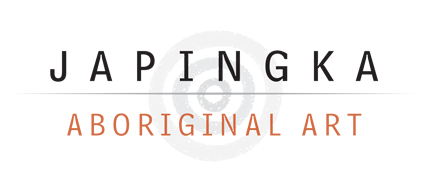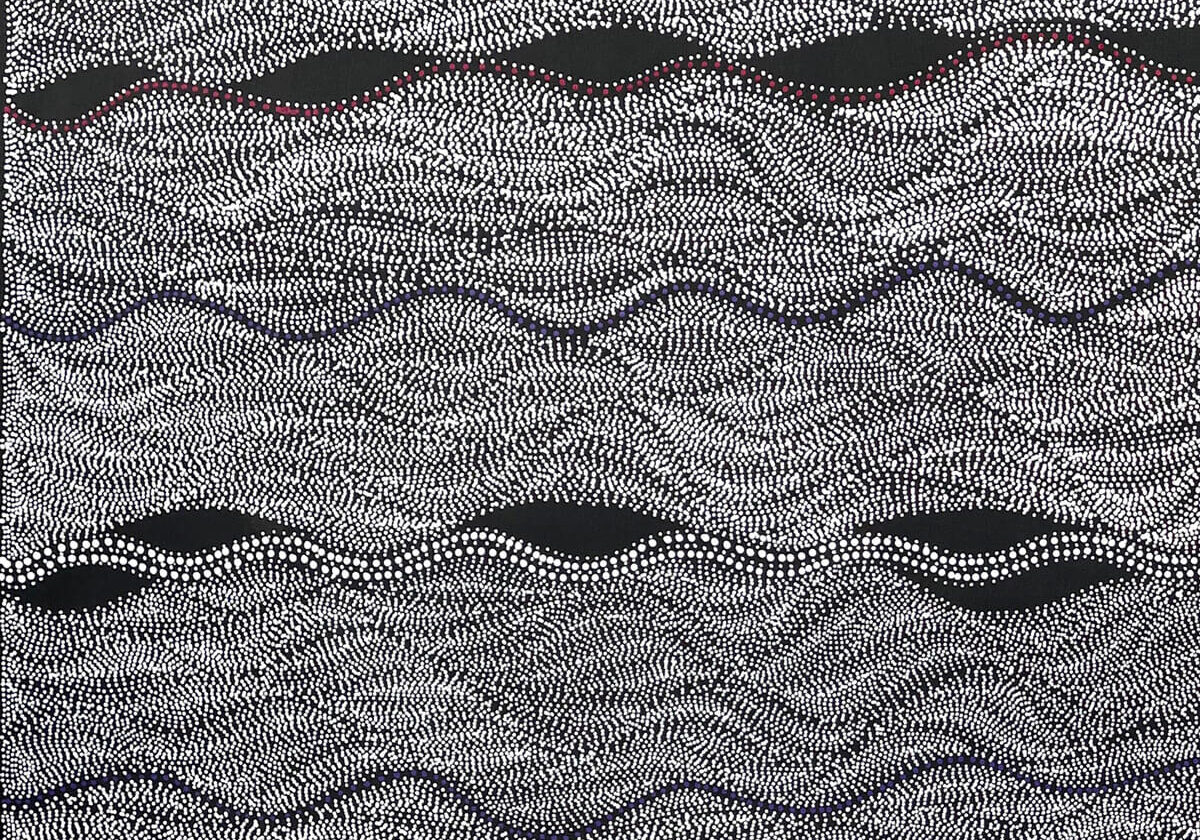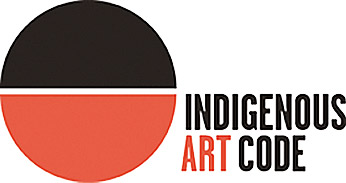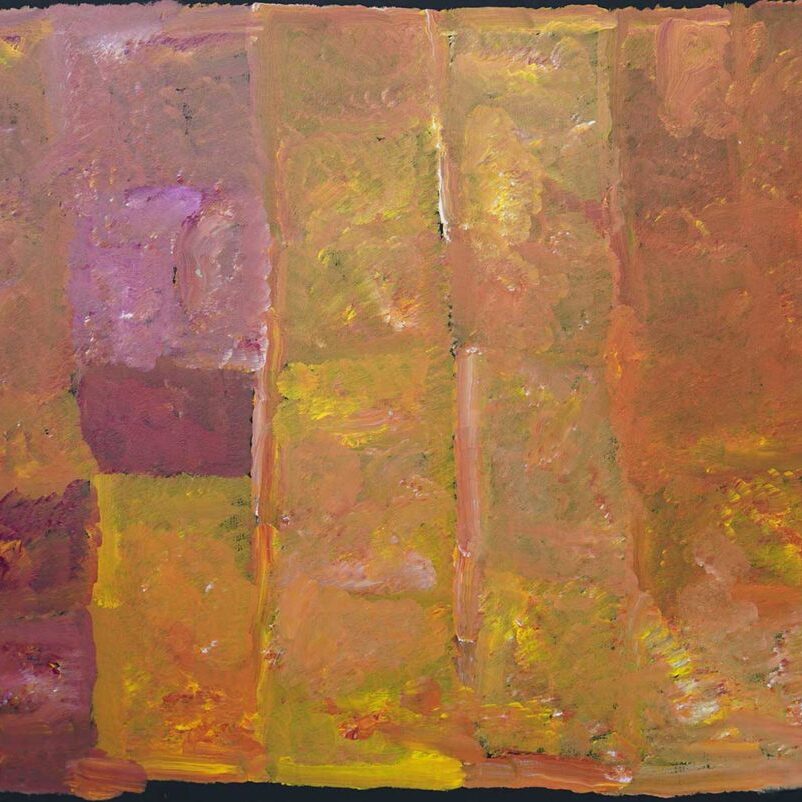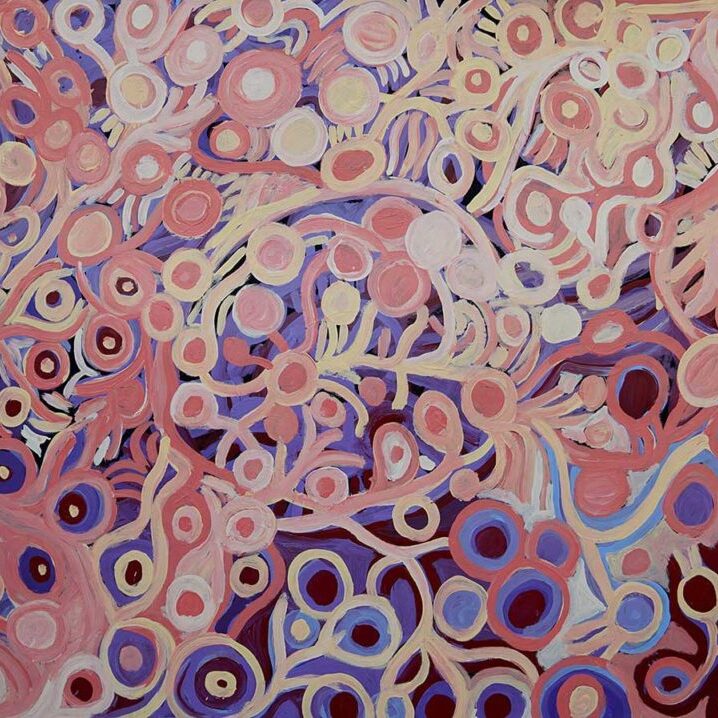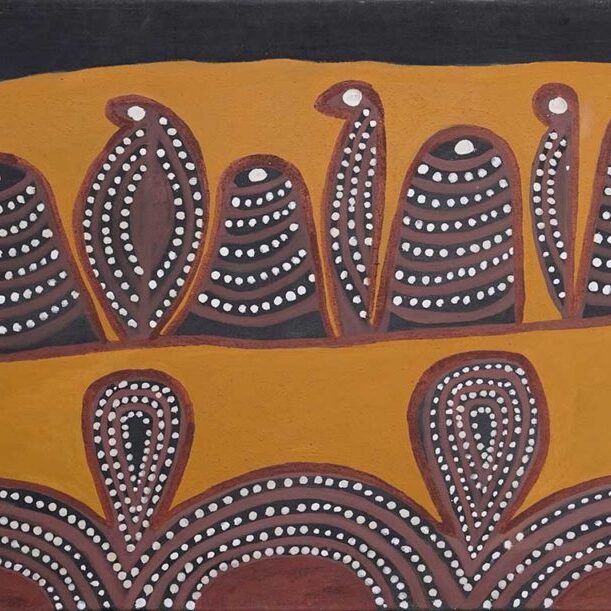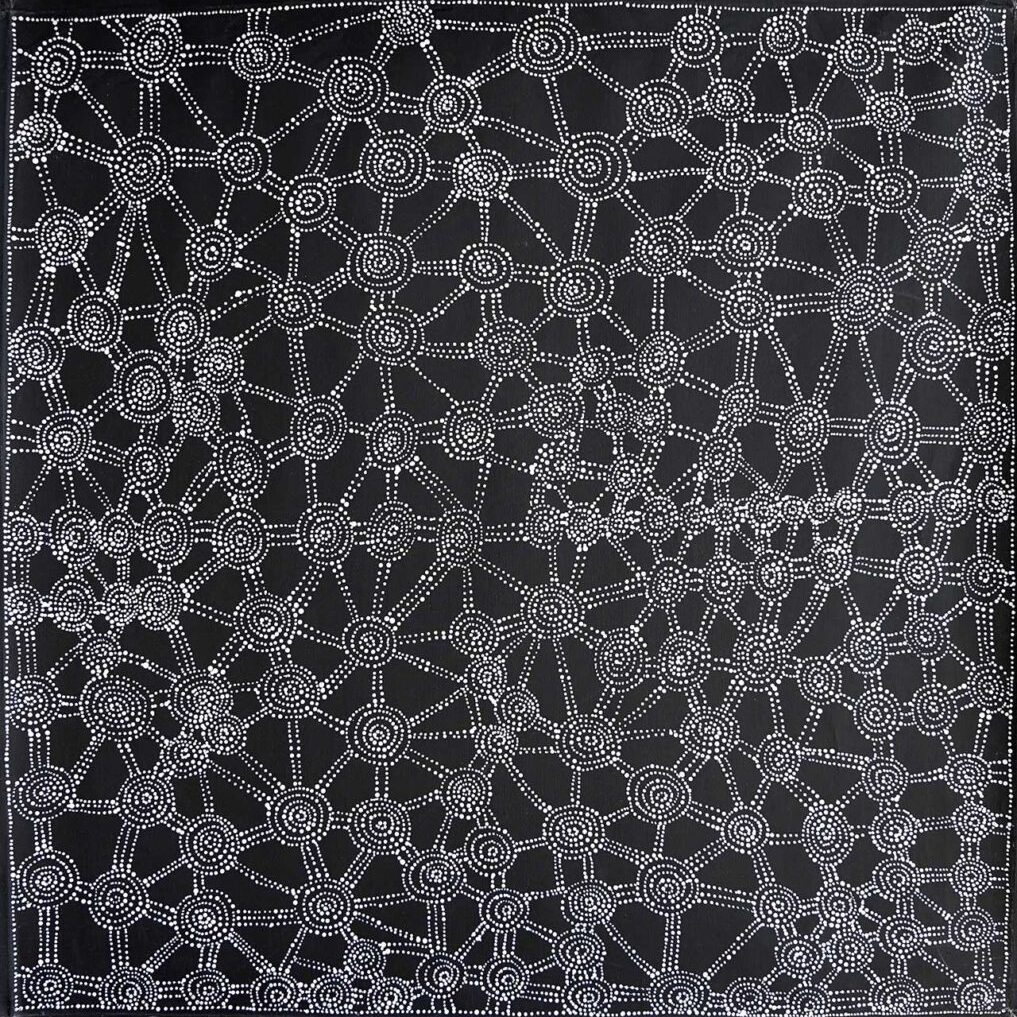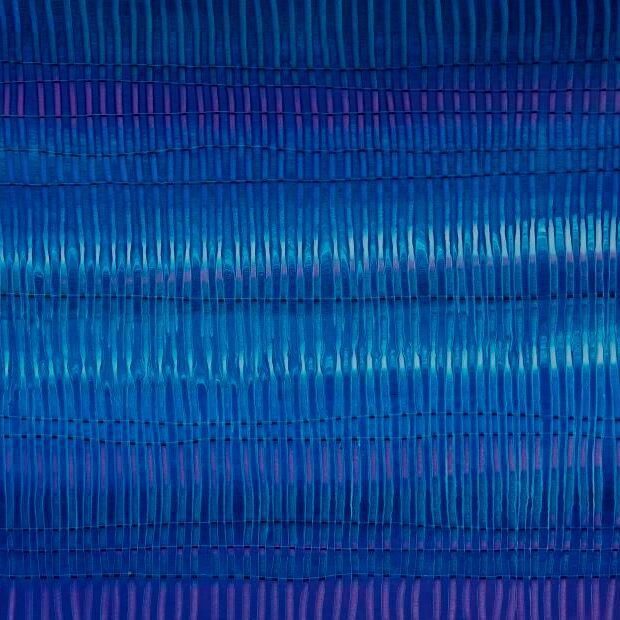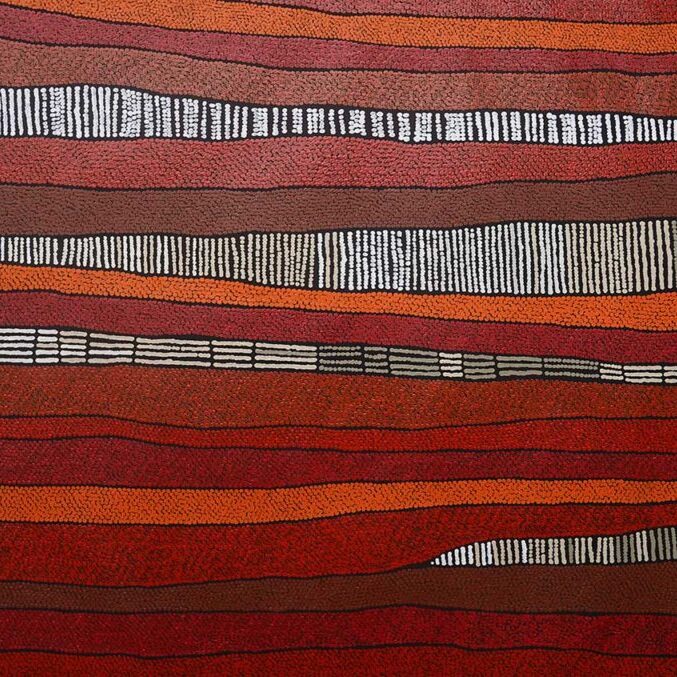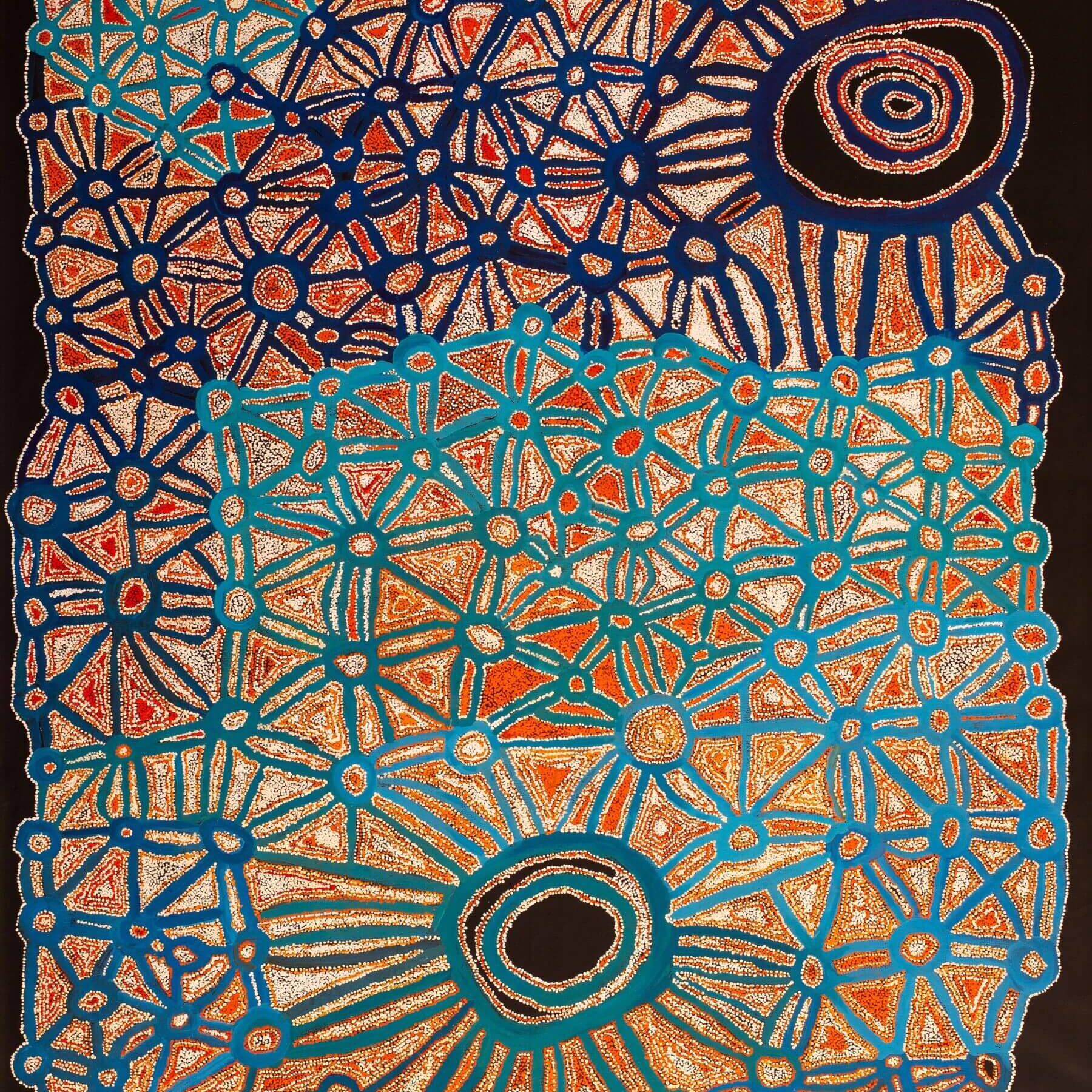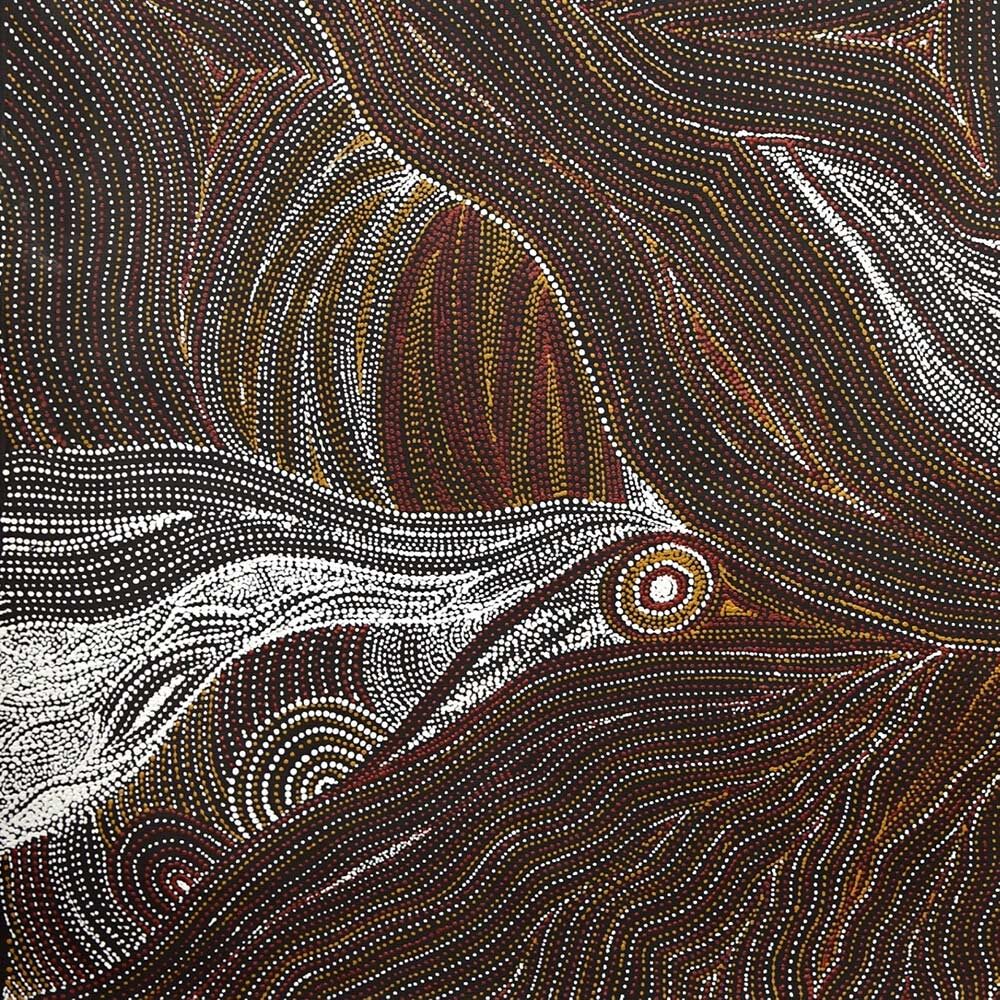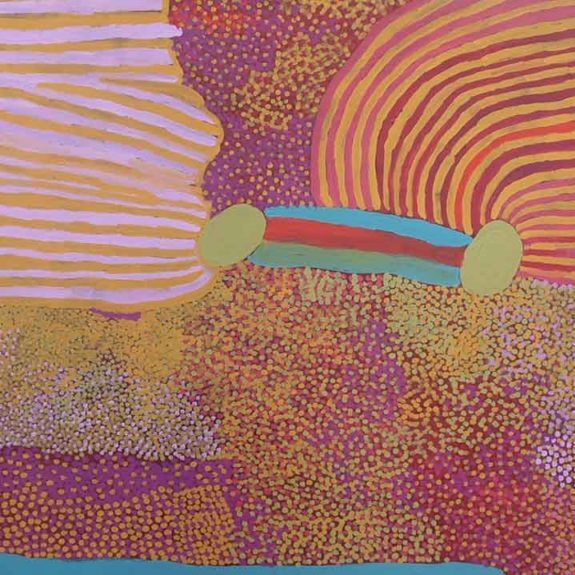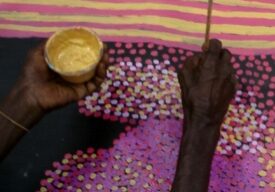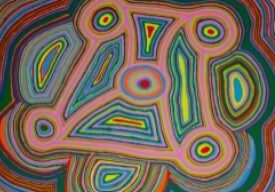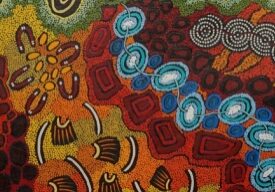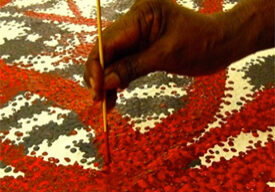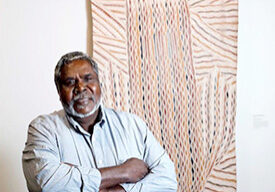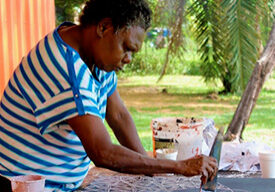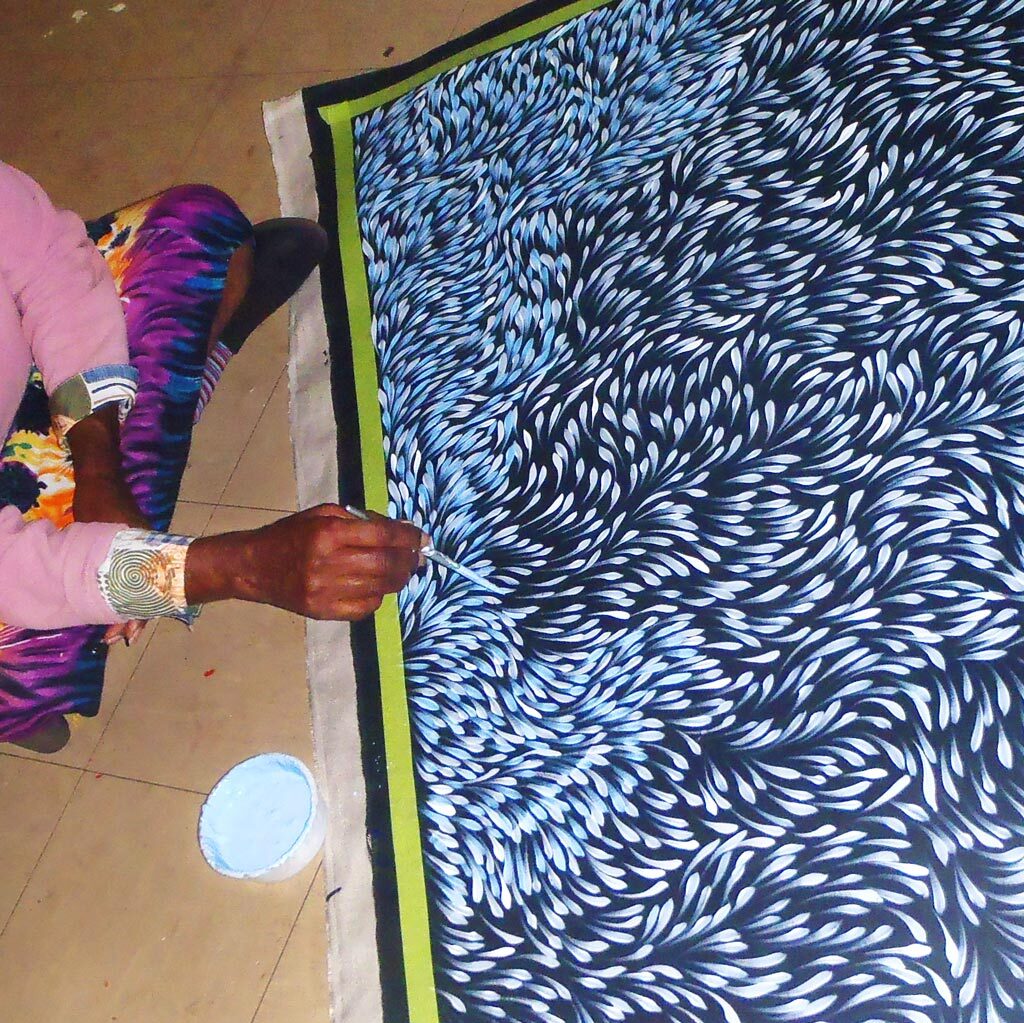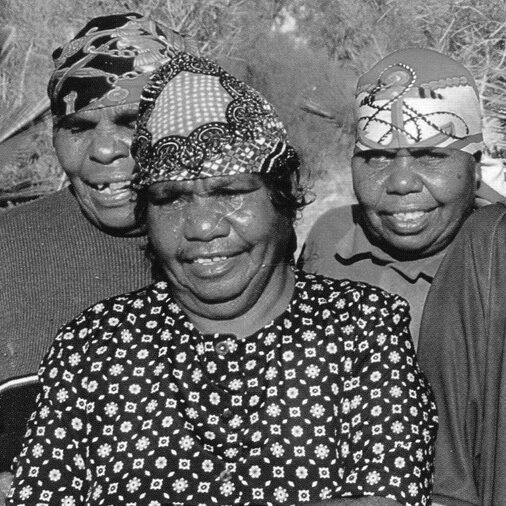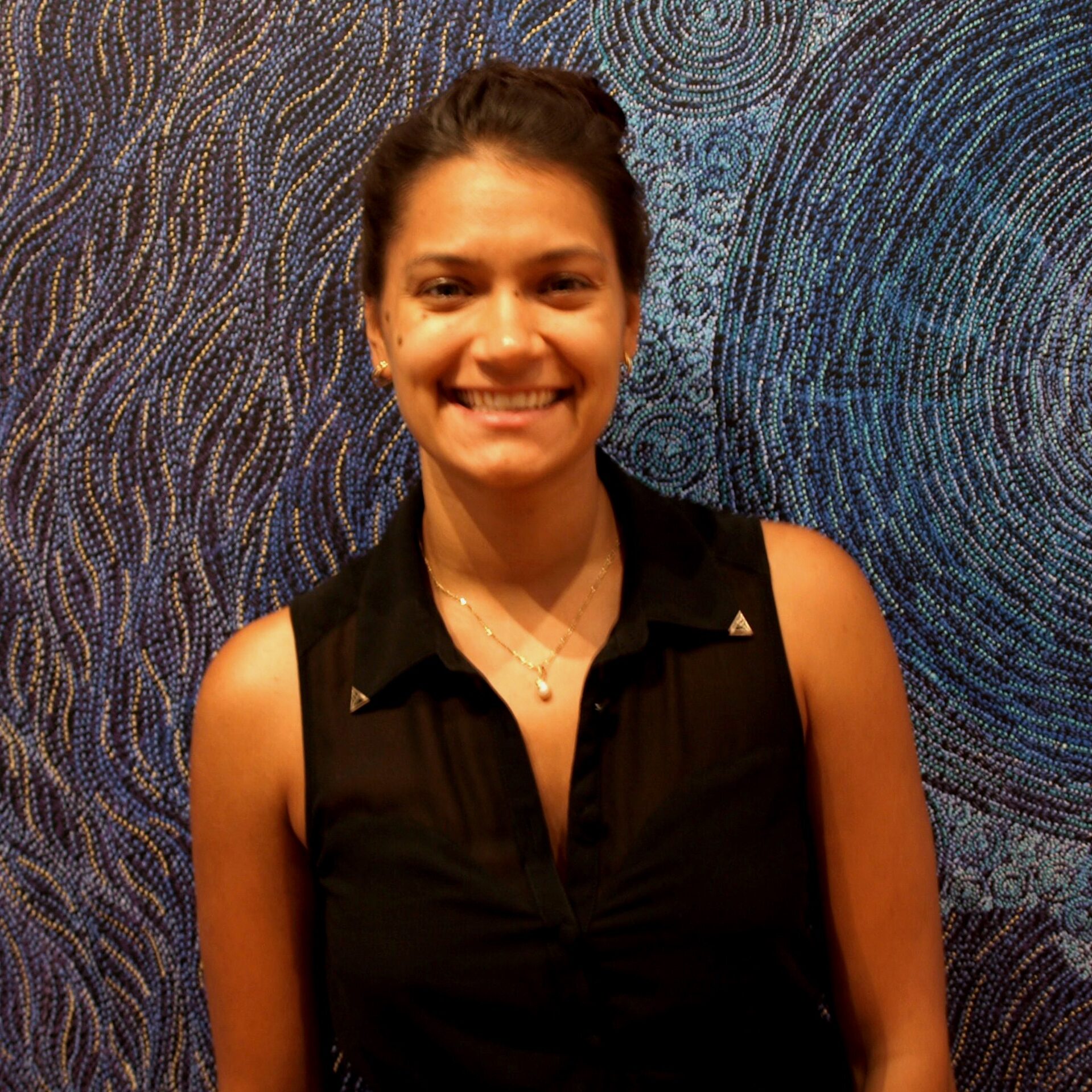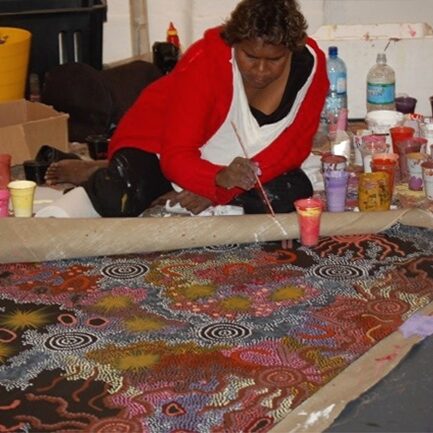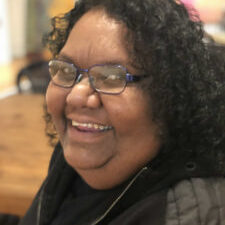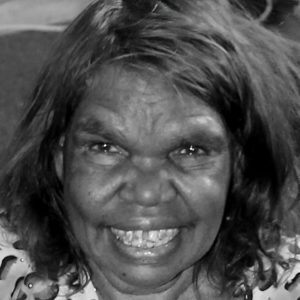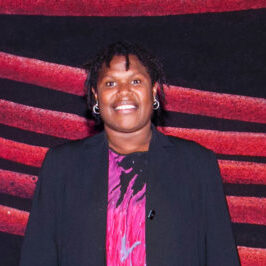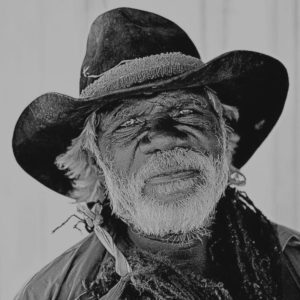Japingka Aboriginal Art Gallery
Madeline Purdie Ngarrangkarni - Dreamtime Stories
Gallery 2 Exhibition: 18 Oct - 20 Nov 2024
Warmun artist Madeline Purdie presents ochre paintings of the Ngarrankarni Dreamtime stories of her Gija ancestors of the East Kimberley. Madeline takes her traditional country as the subject of her paintings, traditional knowledge passed down with distinct visual language and mastery of natural earth pigments.
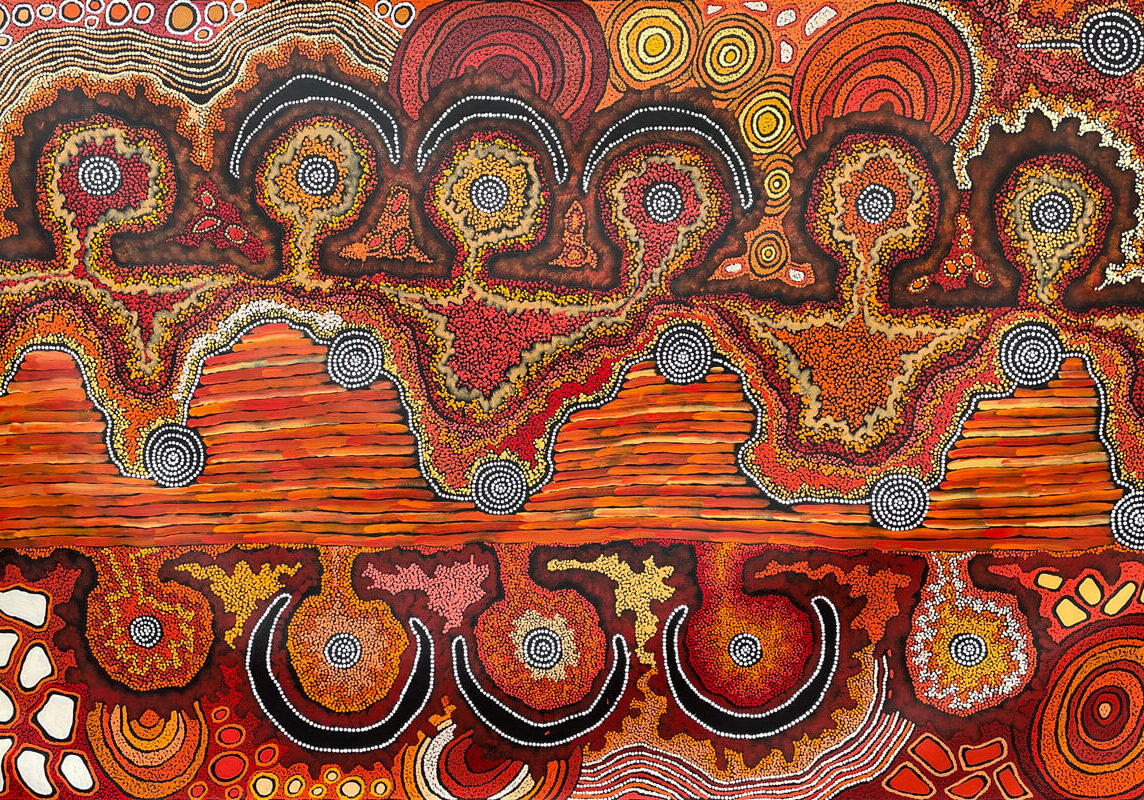
What's New:
Recent Works in the Gallery
New works are constantly coming into the gallery, this is a sampling of medium and larger sized paintings recently received at Japingka.
Japingka Aboriginal Art Online
Japingka Aboriginal Art has been associated with Aboriginal art through its Directors for over thirty five years. We are committed to fair and ethical trading in all our dealings with Aboriginal art and artists.
Japingka Aboriginal Art is a foundation member of both Aboriginal Art Association of Australia the national body for Aboriginal art organisations and businesses, and of Indigenous Art Code, the Federal Government initiative to establish best practice for quality and ethical standards in the industry.
Keep Up To Date!
Subscribe and stay up to date with all the Japingka Aboriginal Art Gallery news, new works and exhibitions.
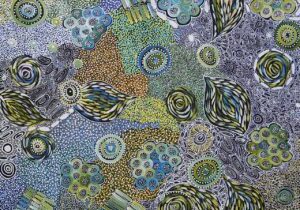
Pricing
Fall in love with art that fits your budget.
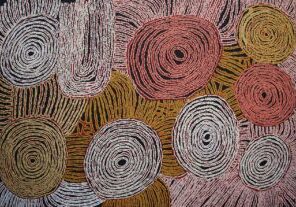
Best Selling Artists
A selection of works from our best selling artists.
Featured Aboriginal Art
Books We Love
Read about Sun & Shadow: Art of the Spinifex People
Dreamtime Stories
Aboriginal culture relates strongly with Dreamtime Stories.
Aboriginal Art Education
Exciting resources for teachers and educators, including lesson plans.
Learn About Aboriginal Art
Aboriginal Dot Painting
Australian Aboriginal dot paintings are typical of a style of art works from the Central and Western Desert. They are a medium for telling stories and enlivening culture.
Aboriginal Art Centres
Aboriginal Art Centres support artists and ensure that their work is sold through ethical channels. Japingka Aboriginal Art is proud to exhibit the work of many Art Centres from around Australia.
Aboriginal Art Symbols
Discover the symbols and iconography used in Australian Aboriginal Art. Learn how they can differ from artist to artist and community to community.
Articles
Read in-depth educational articles introducing Aboriginal art and culture, including interviews with artists, art centres and collectors.
Aboriginal Art In The USA
There is a rapidly increasing of awareness of Aboriginal Art in the United States.
Aboriginal Artist Interviews
Interviews with Aboriginal artists.
Featured Aboriginal Artists
Gloria Petyarre
Bush Medicine Leaves, a traditional Indigenous plant, are a key motif for Gloria Petyarre and a number of Australian Aboriginal artists from Utopia in Central Australia.
Featured Utopia Artists
Utopia in Central Australia has produced many of the country’s greatest Aboriginal artists. Here is an overview of works of Utopia artists showing their varied styles and techniques.
Sarrita King
Layers of delicate dot work create the depth and intricacy in the paintings of Sarrita King, one of the most outstanding young artists in contemporary Indigenous art.
Gabriella Possum
Stories of the night skies and beautiful colours of ancestral homelands distinguish the art of Gabriella Possum Nungurrayi, daughter of the late and great artist Clifford Possum.
Sonya Edney
Sonya Edney is a West Australian artist in demand in Australia and internationally. Her work is featured in the Boola Bardip WA Museum
Dorothy Napangardi
Recognised internationally as one of Australia's foremost artists, Dorothy was born into a family that lived in the Tanami Desert.
Rosella Namok
Well known Aboriginal artist who grew up in the Lockart River community in in far North Queensland
Rover Thomas
Along with Emily Kame Kngwarreye, Rover Thomas is one of the most successful Australian artists in the national and international art markets.
Aboriginal Art - The Big Picture
Learn more about the context for contemporary Australian Indigenous art.
Art of An Ancient Culture
Aboriginal art is part of the culture of Australian Aboriginal people who have lived on the Australian continent for over 50,000 years. They represent the longest continuous culture to be found anywhere on earth. Examples of Aboriginal art are found in caves and rock shelters, and the oldest of these have been dated back at least 18,000 years.
Scientists are using new technology to see if even older dates will be confirmed. Some of these rock art sites depict animals that are now extinct on mainland Australia and show a time when the climate and ecology were very different to what we have today. This artwork is part of the historical record of the Australian continent.
Modern Materials Tell Creation Stories
Today Aboriginal people use modern art materials to make their paintings, but they still rely on the ancient stories and culture to give meaning to what they paint. At the centre of many artworks are the Dreamtime or Creation stories that tell of how the land and all of nature were created by the Ancestors.
The Dreaming stories connect people to the land and require that the people act as guardians and continue the traditions and ceremonies laid down by the Ancestors. By painting and singing the ancient stories and songs the people maintain their connection to the land and their ancient heritage.
European Impact On Culture
Aboriginal people experienced a massive change to their culture and lands when European settlers came to Australia in 1788 and spread out across the country. In the past 230 years, as many as half of the 200 plus Aboriginal languages have been lost.
Many have survived and are part of the movement today to recognise and preserve Aboriginal languages, knowledge, and culture. From the 1970s onwards there began a change to the way Aboriginal people gained recognition for land rights and cultural respect.
Contemporary Aboriginal Art Movement Begins
A major step happened in 1971 at Papunya, a desert community in Central Australia, when senior men painted a large mural at the school to show the Dreaming story of the Honey Ant. School teacher Geoffrey Bardon had asked young students to paint stories from their own culture rather than paint images taken from western culture.
The elders painted the mural using the symbols familiar in their own culture, possibly intended as a statement of authority and direction marker for the local discussion about art. This action led to a painting group of senior men working at the school. They produced artwork based on their own Dreamings and using the ancient symbols of desert culture.
Aboriginal Fine Art Movement Spreads
The decisive action by Papunya artists gave rise to the Desert Art movement as other communities and artists also started painting their stories using modern art materials.
The early paintings made at Papunya have become very valuable, and by the 1980s Aboriginal artworks were being exhibited in art museums and galleries in cities across Australia and internationally.
Aboriginal Art Centres Facilitate Cultural Expression
Many remote Aboriginal communities developed their own art centres to assist artists with materials and marketing. Papunya, Yuendumu, Balgo, Haasts Bluff, Ernabella, Kintore, and Lajamanu were among the communities that established art centre structures.
Other communities like Utopia relied on resources in towns like Alice Springs, which acted as service centres for the central desert region. Since the 1990s the availability of Art centres has extended to include hundreds of small remote communities.
Colour Palette of Aboriginal Art Expands
The early desert painters at Papunya relied on a range of basic colours, often gouache or water-based paints, using black, white, yellow, red and brown tones. These colours were the ones most like the ochre earth pigments that had been used for ceremonial painting and rock art for thousands of years.
As the artists moved towards modern acrylic paints in the 1980s the range of available colours became much broader and brighter colours were introduced. Whereas men were the main artists at Papunya and women assisted within family groups to work on the men’s paintings, by the mid-1980s women began to make their own paintings. As part of this process, as women artists became well known they also opted for a wider range of colours.
Aerial View of the Land
Many desert paintings use aerial perspective, where the land is seen from above as if painting a map of the artist’s country. This comes from the need for Aboriginal people to keep deep knowledge of their country in picture form and in a song cycle so that they could carry large amounts of information in their heads.
The aerial view paintings often have Dreaming information overlaid on the map of the terrain, giving both a physical and a spiritual account of the country.
Aboriginal Art Brings Income & Cultural Expression
The spread of contemporary Aboriginal fine art has been an important part of life in remote communities. It has provided financial income to artists and their families, while also strengthening traditional culture and its role in everyday life, in schools and all interactions with the wider community.
Art has been able to communicate the values of Aboriginal life to the rest of the world and to overcome language and communication barriers.
Regions, Custodianship, Family Connection
Aboriginal art is regional in style, with each area having its own style and preferences, based on the local Dreamings and the work of influential senior artists of the area. Custodianship of Dreamings is passed down along family lines, and each family only paints those stories that they inherit.
Some regions have elected to use only natural ochre pigment paints while others have chosen to use acrylic paints within a certain preferred tonal range. Many of the artists do their painting in shared working areas, so ideas and techniques are readily observed and shared across generations within families.
Recognisable Aboriginal Art Styles
The art of the Central Desert has been the most influential in bringing Aboriginal artworks to a worldwide audience. Its use of repetitive patterns and mesmerising rhythms that are based on the forms of landscape and tied to Creation stories seems to speak to all universal values.
Other art-producing regions in Australia have a longer history with collectors. In particular, the bark painters of Arnhem Land along the north coast of Australia, have sold their work to collectors since the end of the nineteenth century. The styles seen in these regions use natural materials, ochre pigment on tree bark, and fine linework made with cut reeds. The subjects often include figures of humans and animals, sometimes using what is called the x-ray view, that shows the insides of the animals.
Contemporary Aboriginal Art Has Universal Appeal
While these paintings were admired and collected, they were mostly displayed in ethnographic museums that showed the art of the Indigenous First People.
It took the more abstract work of the desert artists to open up to the modern world about the time-honoured values and knowledge contained within Indigenous cultures. Now, these paintings are shown alongside modern western art in contemporary art galleries and homes of art lovers around the world.
